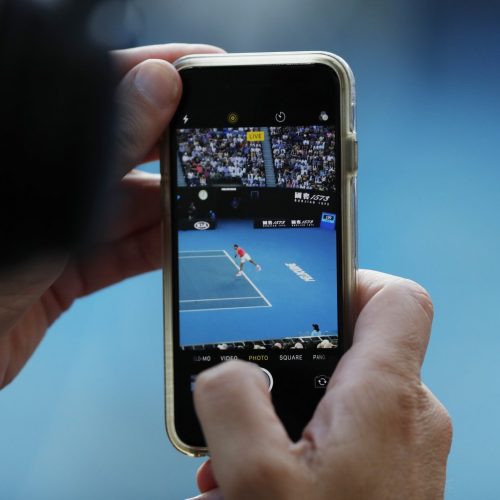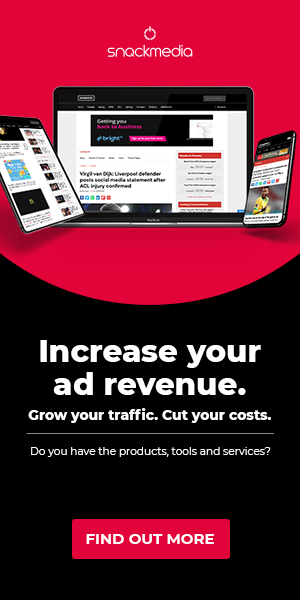Women’s sport is an open goal for brands
By Lucy Banks, Head of Content for Brands, Google EMEA
The 2019 Women’s World Cup will go down in history as a landmark moment for women’s sport. A record 28.1 million people tuned into the tournament in the UK via the BBC, while over a million tickets were sold to fans flocking to stadiums around France and countless more engaged with clips, highlights and interviews on platforms like YouTube.
Speaking at the ESPY Awards after winning Best Female Athlete, USA forward Alex Morgan underlined the opportunity for further growth in women’s sports, stating that “investment in women and girls should not only occur in the playing fields but in more storytelling of badass, amazing women who continue to show that we are more than just athletes.”
For brands and advertisers, Alex Morgan’s words should be at the very front of mind. The opportunity for brands to lead this conversation and use their storytelling powers to inspire and engage audiences around the world is one that cannot be missed.
But don’t just take my word for it. Look at Nike.
The mammoth sports brand recently attributed a 7% increase in quarterly revenues to its unprecedented investment in the Women’s World Cup. Nike led the way in producing content and promoting the tournament – producing a critically acclaimed ad challenging aspiring female footballers to ‘dream’, sponsoring 14 of the 24 teams at the tournament and achieving a 51% share of brand voice over social media.
This authentic support of the tournament not only resonated with consumers, but helped Nike edge ahead of their close rivals. According to Hookit data (via SportsPro), Adidas promoted 535 posts around the Women’s World Cup, accumulating 4.1m total engagements with an average of 7,844 interactions per post. Nike comprehensively bettered this, achieving a total engagement of over 16.4m with 449 promoted posts, averaging over 36,000 interactions per post.

This success helps illustrate just how receptive audiences are for content that taps into their passions for sport. This is backed up by YouTube data, which reveals a 300% rise in watch time for women’s football content over the last year – while YouTube viewers themselves agree that a lack of coverage is the main barrier to watching more.
There is a clear opportunity for brands to drive engagement with this growing audience – but it is important to remember that this opportunity is not limited only to football. Interest in other sports is also flourishing amongst audiences, with women’s rugby watch time increasing by 200% on YouTube in the past year. As the Women’s Rugby World Cup approaches in 2021, brands should pay heed to the data and the lessons from the Women’s football World Cup when devising plans to engage and excite audiences.
Modern tools offer unique avenues for brands to connect with audiences hungry for sport. Google Preferred, for instance, allows brands to advertise alongside the top 5% of YouTube content across a variety of ‘Lineups’ – such as Women’s Sport, Fitness and Wellbeing – next to content that’s brand-safe and human-verified. For brands wanting to go the extra mile, YouTube also offers more traditional sponsorships – or content partnerships, where brands collaborate with partners to create exclusive content.
The Women’s World Cup has opened the eyes of brands to the increasingly lucrative opportunities around women’s sport – and brands like Nike have shown how it is possible to effectively marry purpose with profit when engaging in this growing sector.
My message to brands and advertisers is simple: follow today’s data, not yesterday’s stereotypes. 52% of the world’s population are women, yet only 7% of sports content on mainstream media features women. Brands should view women’s sport as an open goal and a real opportunity to authentically communicate with audiences that are hungry for content.
About author
You might also like
The seven essentials for achieving successful sports branding
By Daniela McVicker When it comes to sports, great branding is a must. Your brand influences how people see your company or team. It helps you to forge connections with
Live Chat: A New Social Experience in Sports
Article written by John S. Kim, CEO and co-founder of global API company SendBird Social media rose to prominence throughout the world due to its potential for connection. Social channels provided the
Snack Media’s Football Content Campaign’s Review: February
By Mike Constanti This series, in partnership with Snack Media, will look at the best football campaigns from advertising to social media on a monthly basis, as Digital Sport evaluates how








